We ran into some iffy internet connection in our hotel in Savannah, so these are quite a bit delayed. I put all of Savannah into one post, so it is a bit long but the pictures are well worth the journey...........
Savannah is the first planned city in the United States that is still studied throughout the world as a model for urban design. It was all planned in England by General James Edward Oglethorpe. who volunteered for Savannah's mission to buffer the English Charleston from from the Spanish St. Augustine.
Oglethorpe built Savannah as a series of rectangular "wards" each constructed around a central square. Oglethorpe also had a plan for a 'classless society' and prohibited slavery, rum, catholics, and lawyers in Savannah. He lost on all counts (the Irish turned out to be cheaper labor than slaves due to the taxes, housing and feeding of slaves), but the beautiful squares remain and create wonderful green space throughout the historic district. And the Savannah boasts the 2nd largest St. Patrick's Day parade in the U.S. - they have a committee that meets year-round to plan! Their headquarters includes a countdown clock to the next St. Patrick's Day.
Colonial cemetery is the oldest cemetery in Savannah and is the final resting place of many of the yellow fever victims. Savannah suffered greatly from 3 fires at the same time the price in cotton dropped. The burnt buildings served as great breeding grounds for the mosquitoes that carried yellow fever.
The lion that marks the Savannah Cotton Exchange.
A view of City Hall
The Savannah River fronts the touristy river street. The barges that frequent the river are quite a site as you are enjoying a drink or dinner.

A monument to the sailors who have visited Savannah.
Savannah is home to many influential people, such as the founder of the girl scouts, Juliette Low and Mary Telfair. Mary gave the family mansion to the Georgia Historical Society to serve as a museum. The 5 statutes in front are Phidias, Raphael, Rubens, Michelangelo, and Rembrandt. Inside hosts more beautiful sculptures, modern art, paintings, and a collection of tea sets from all over the world.
The Haitian Monument commemorates the sacrifice and service of the 750 Haitian volunteers who fought for American independence and to get Savannah from the British in 1779.
Savannah's architecture throughout the historic district is just charming. Dining musts that are in these historic buildings include Ms. Wilkes' Dining Room (an old boarding house that maintains the communal dining room and serves southern favs including fried chicken - arrive early, lines are long, and bring cash; no credit cards) and The Old Pink House (an incredible home with impeccable southern hospitality and food).
Forsyth Park covers 30 acres and is the center of local life for residents and tourists. Don't miss the farmers market on Saturdays. The fountain is world famous. Cast in iron on a French model it was dedicated in 1858.
A scurry of squirrels playing in the park
Savannah's most famous tree, the 300 year-old Candler Oak. During Sherman's occupation, wounded confederate soldiers were treated within a barricade around the oak. It is now on the National Register of Historic Trees.
The Hiker - memorial to Georgia veterans of the Spanish-American War. Sculpted in 1902 by Alice Ruggles Kitson, there are 50 replicas and put up all over the U.S. Because the same bronze was used for all 50 the statues are used by scientists to gauge the effects of acid rain across the nation.
On the banks of the Wilmington River is Bonaventure cemetery. John Muir wrote about it's beauty of oaks and azaleas. It is the final resting place for Johnny Mercer, Conrad Aiken, and many others.
We rode bikes there - recommended for only the incredibly adventurous and brave as you pass by some significant roadways with little sidewalks. The adventure was well worth it. We spent the day photographing the statues and enjoying the shade of the oak trees.
We finished our trip enjoying more of the architecture and surroundings.
Cathedral of St. John the Baptist. The inside is even more ornate than the outside.









































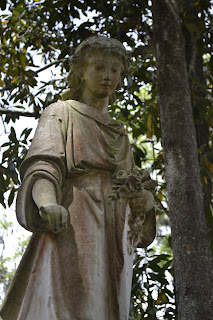








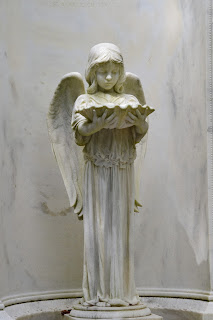



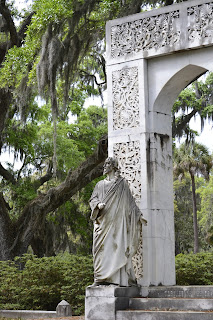






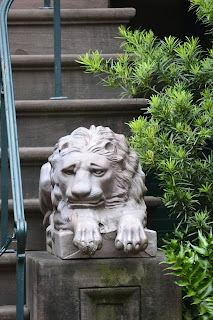

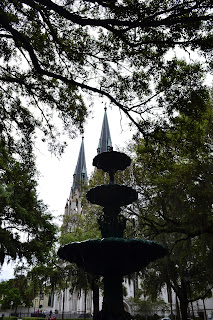

No comments:
Post a Comment